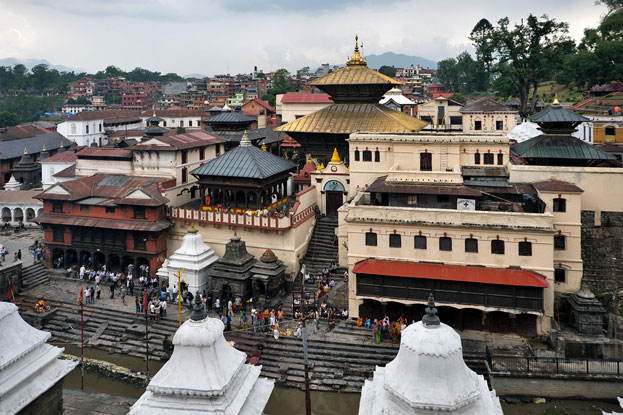Pashupatinath Temple has been in the news lately. First, was the move to bring the temple's finances into the public domain, which was seen as a positive step towards modernising this ancient institution. Now Nepal has sought India's help to protect Kathmandu's famous 5th century temple on the Bagmati River. Listed in UNESCO World Heritage Sites, the historical wooden gates and pillars of the temple have been damaged by moisture and termites, and are on the verge of collapse. The main temple was first renovated by the Malla King Bhupatindra Malla in 1700 BS (1643 AD) and later by the hereditary Prime Minister Chandra Shumsher Janga Bahadur Rana some 100 years ago. There is a need to immediately renovate the temple which has not been renovated for more than a century.
Want to read UNESCO Daily News Updates? Click Here!!!
Pashupatinath Area Development
 Sources in the Union Culture Ministry said the Archaeological Survey of India (ASI) is studying a proposal in this regard from the Pashupatinath Area Development Trust (PADT). The holy shrine, which is visited by large numbers of Hindus as well as Nepalese, among others particularly during festivals like Shivratri, was built in 516 BS (1459 AD) by Lichhavi King Mandev.
Sources in the Union Culture Ministry said the Archaeological Survey of India (ASI) is studying a proposal in this regard from the Pashupatinath Area Development Trust (PADT). The holy shrine, which is visited by large numbers of Hindus as well as Nepalese, among others particularly during festivals like Shivratri, was built in 516 BS (1459 AD) by Lichhavi King Mandev.However, with the passage of the time, the weathering effects have started showing on the centuries-old structure especially on its four main wooden doors. The western door has a statue of a large bull or Nandi, covered in gold. When contacted, Narottam Vaidya, treasurer of the PADT, confirmed that they have approached ASI through the Indian embassy in Nepal to study the damages caused by the seepage on the wooden gates and pillars of the temple.
"The wooden structures are in a dilapidated state and can crumble any time. Since it is the protected site of the UNESCO, we cannot treat this askance. We believe that the ASI has enough expertise in restoring such structures," Vaidya told The Pioneer over the phone.
 |
| Pashupatinath Temple |
"To begin with, we want the ASI to prepare a project report detailing the cause and extent of the damage to the wooden structures," Vaidya said, adding, "once we get the report, we will initiate repairs and renovation of the abode of Shiva as per international standards for which we are banking on the ASI."
The world-famous temple's daily earnings stand at around Rs 1,35,000 on average. Excluding festivals and special occasions, the yearly income of the sacred temple could be at least Rs 50 million, according to various reports.
Meanwhile, the sources said that the ASI is seriously considering the proposal. "Fund and logistics needed for the job is being worked out. Final decision is yet to be taken." The temple has special importance for India as the priests always have been from south of the Vindhyas, a tradition that is believed to have been started by Adi Shankaracharya in 6th century, who sought to unify the different states of Bharatam (Unified India) by encouraging cultural exchange.
If given the green signal, it would be not be the first time that the ASI would be showcasing its acumen in the neighbouring country. Way back in the 70s, the ASI has conducted exploration and carried out important excavation in the Terai region of Nepal.
In the recent past, the ASI has successfully carried out various archaeological activities abroad from time to time including explorations and excavations of ancient sites and conservation and scientific preservation of monuments on the request of the respective countries.
To name a few are the structural conservation of Ta Prohm Temple in Cambodia and Wat Phou Temple in Laos, structural conservation and chemical preservation at famous Buddhas of Bamiyan in Afghanistan, Angkor Wat in Cambodia and The Ananda Temple in Myanmar.









Book You are Best Tourist Guide in India with Touritor.
ReplyDeleteBest Tour Guides in India
Private Tour Guides India